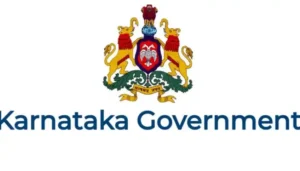Karnataka government is facing growing pressure to address a significant shortfall in its public workforce, with 2.84 lakh sanctioned posts currently lying vacant across departments.
This gap has led to a heavy reliance on outsourced and contractual staff, raising concerns about service delivery, job security, and long-term administrative efficiency.
According to official data from the Department of Personnel and Administrative Reforms (DPAR), the state currently employs 5.88 lakh personnel, of whom 96,844—or roughly 16%—are outsourced.
This trend reflects a broader shift toward temporary staffing, especially in Group C and Group D roles, while core functions remain under strain due to the recruitment freeze that lasted nearly nine months.
Freeze on Hiring in Karnataka: Internal Reservation Delays
The recruitment backlog is largely attributed to a hiring freeze imposed by the DPAR between November 2024 and August 2025.
The freeze was initiated to finalize internal reservations among Scheduled Castes, a politically sensitive and legally complex process.
While the freeze has now been lifted, the delay has compounded staffing shortages across key sectors.
Medical Education Minister Dr. Sharan Prakash Patil confirmed a hiring freeze in his department. As a result, some doctors had to be appointed on a contractual basis.
“Only Group D and, to some extent, Group C employees are working on a contract basis, not doctors,” he clarified, adding that the outsourcing policy was a long-standing decision by the finance department.
Outsourcing Trends: Health, Revenue, and Education Hit Hard
The Department of Medical Education employs the highest number of outsourced staff, totaling 15,824.
The Revenue Department follows with 15,376 outsourced employees, while the Health Department has 11,424.
These figures highlight the extent to which essential public services are being staffed by temporary workers.
The government has allocated ₹2,273 crore this fiscal year for outsourced staff salaries.
Overall, the state’s salary bill is projected to reach ₹85,860 crore, marking a 19% increase from the previous year.
This surge reflects both the cost of maintaining a large contractual workforce and the anticipated expenses of new recruitment drives.
Note: We are also on WhatsApp, LinkedIn, and YouTube to get the latest news updates. Subscribe to our Channels. WhatsApp– Click Here, YouTube – Click Here, and LinkedIn– Click Here.



